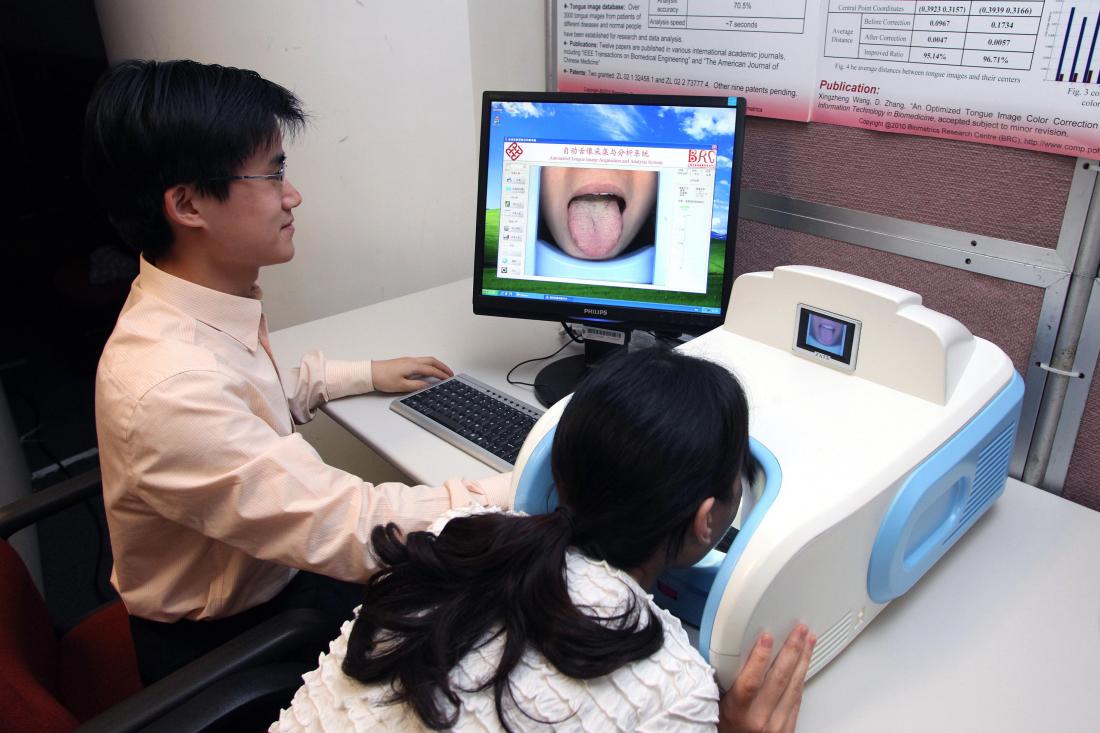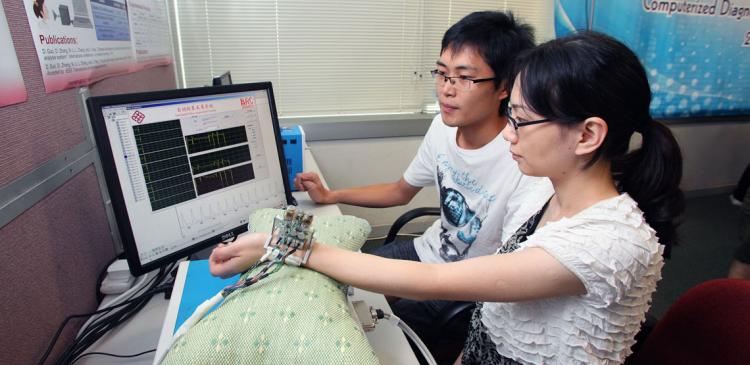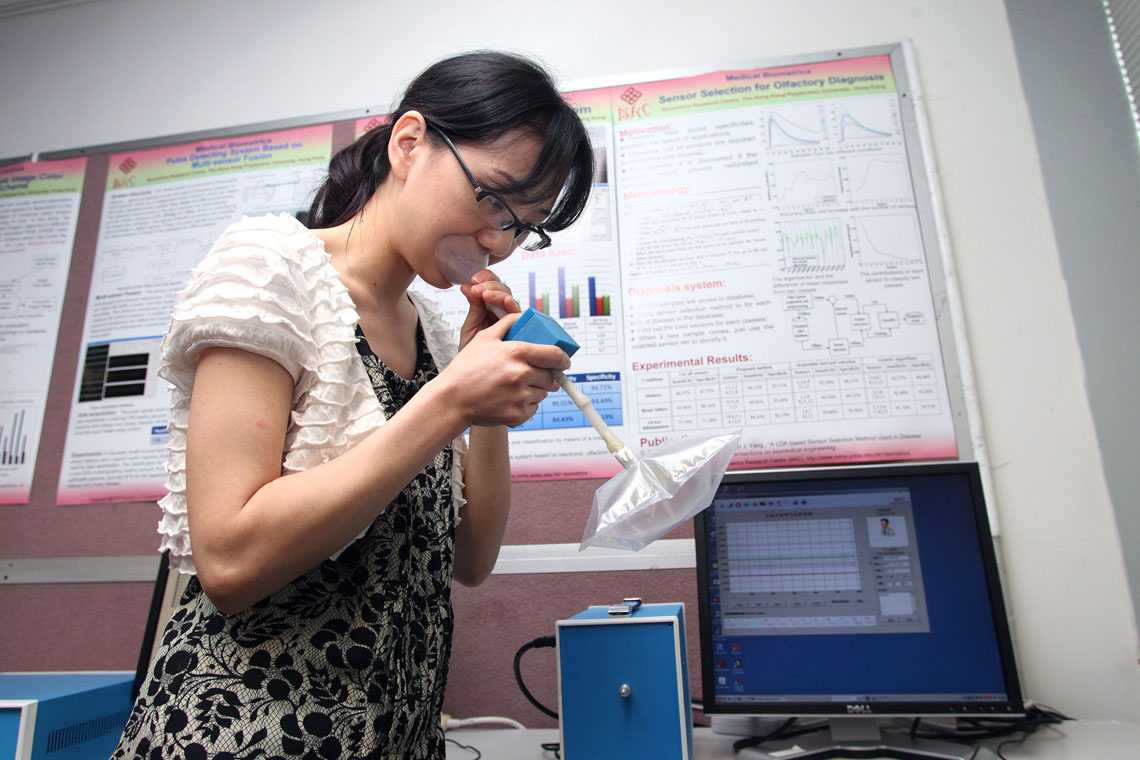Automated Tongue Image Acquisition and Analysis System
The Hong Kong Polytechnic University (PolyU) has made a head start in Medical Biometrics researches, with the development of several state-of-the-art authentication and medical diagnosis tools based on the concept of traditional Chinese medicine (TCM).
At the helm of this pioneering project is Professor David Zhang, Chair Professor and Head of PolyU's Department of Computing, who has been leading a dedicated team of the Biometrics Research Centre to collect and analyze the biometric information of more than 30,000 patients in Northern China over the past 10 years. The massive data collected has provided a solid foundation of the establishment of a database to support modernization of TCM researches in a scientific manner.
With this rich source of empirical data, Professor Zhang and his research team have independently developed several ground-breaking innovations. These include three novel diagnosis systems (Automated Tongue Image analysis system, Pulse waveform analysis system and Olfaction analysis system). These systems are developed based on the three principles of TCM diagnosis, namely inspection, "auscultation and olfaction" and palpation (望聞切).
The Automated Tongue Image Acquisition and Analysis System can capture the image of a tongue and compare its features against the tongue images in its database. Based on the valuable training of the given database captured from 290 health, 1,092 sub-health and 1,731 patients, this system can detect a change in tongue colour which may indicate an early symptom of diseases such as pancreatic or renal problems. Currently, the system can achieve an accuracy of 80% in classifying these three groups of image only by the colour feature. Eight specific diseases (Pancreatitis, Appendicitis, Acute and chronic bronchitis, Diabetes, Cardiovascular, and Brain diseases) can be classified with health image samples at an average accuracy of 85%.
Another innovation which has been developed is the Pulse Wave Analysis System, which plots the signal of pulse on a graph for storage in computer. Using this system, the distinct pulse patterns of a patient can be categorized for further analysis. By matching the pulse features with the established database, the basic health status of a patient can be measured and some common diseases can also be diagnosed accurately. The system can successfully classify pulse signals into five typical patterns (the classification of these patterns are based on traditional Chinese pulse diagnosis theory) with an average rate of 92.2%, in terms of the shape features. In addition, the system can make effective diagnosis: an accuracy of over 94% can be reached in distinguishing the healthy person from patients with Pancreatitis. Moreover, an accuracy of over 85% can be reached in distinguishing healthy persons from the mixed kinds of diseases (including Pancreatitis, Appendicitis and Duodenal Bulb Ulcer).
In addition, PolyU researchers have also developed the Medical Biometrics Olfaction Analysis System which aims to analyze the content of exhaled gas by a patient for further analysis using electronic olfactory technology. The olfaction analysis system is able to distinguish healthy persons from patients, monitor the medical treatment of diseases, and measure the blood glucose levels. Experiments indicate that the system can achieve a sensitivity of 95.0% and 94.1%, a specificity of 93.5% and 93.7% in classifying healthy persons from patients with renal diseases and Diabetes, respectively.
Over the past ten years, the biometric researches by Professor Zhang have been awarded research funding amounting to over HK$18 million from the SAR Government's Research Grants Council and National Natural Sciences Foundation of China (NSFC). The working team is already secured a few patents for these breakthroughs and published many papers in top international journals. But Professor Zhang is by no means complacent with this output.
In the next phase of Chinese Medical Biometrics research, Professor David Zhang plans to further enrich the content of the Chinese Medical Biometrics Database by collecting more information of Chinese patients in South China, exploring collaboration with research institutes in the region, and applying the developed systems to communities.
The latest research findings by Professor Zhang and his teammates were presented at the International Conference on Medical Biometrics hosted by the University. The two-day conference from 29 to 30 June has attracted about 100 participants.
Press contact: Ms Jodie Lee
Department of Computing, PolyU
Tel: (852) 2766 4239





